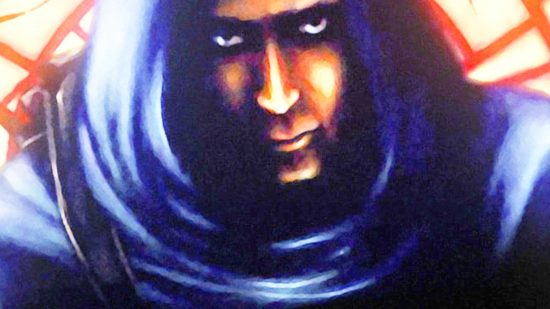25 years ago, Looking Glass Studios released Thief: The Dark Project, and thus was born the grandparent of modern stealth games. Thief perfected the genre alongside Metal Gear Solid, but whereas MGS popularized third-person, spectacle-driven espionage (and increasingly unhinged Kojima narratives), Thief took a darker, more intimate dive into the hearts of its players. And though the series has been slumbering for years, it continues to resonate, with a thriving mod community and a generation of game designers weaned on its iconic vibes.
Upon its 1998 release, Thief stood in stark opposition to its twitch FPS peers like Doom and Quake, elevating tenets of immersion, reactivity, atmosphere, and player agency. It charted the adventures of Garrett, a sardonic master thief quietly plying his trade in a steampunk-meets-DnD world. And while it and its sequel, The Metal Age, were not enormous hits, they’ve proved profoundly influential. Many of the original design team migrated to other studios, taking with them the lessons of their time at Looking Glass.
The stealth systems of Oblivion and Skyrim? Created by Emil Pagliarulo, Thief designer. The atmospheric, immersive storytelling of Bioshock? Conceived by Thief writer Ken Levine. And of course Dishonored, Arkane’s flagship stealth-em-up, owes its grungy DNA to Thief – which makes sense, as its project director, Harvey Smith, was a key designer on the original series. To say nothing of Deus Ex, Starfield, even Guitar Hero… the list goes on and on, all overseen by ex-Thief developers.
“Looking Glass didn’t make Thief or System Shock by following a rigid template, and neither should we,” says Dana Nightingale, campaign director of Arkane’s hit Deathloop. “I am constantly charging the designers under my wings to regard the design philosophy not as dogma but as a school of thought, designed to be questioned, iterated on, experimented with.”
Nightingale typifies another element of Thief’s legacy: She began her career as a Thief modder, authoring custom missions, and is one of many such fan-turned-pros who now occupy the industry. 25 years on, Thief’s community is still using the original engine and editing tools to craft hundreds of new heists, from solo experiments to enormous, professional-caliber campaigns. These fan missions (or FMs) are all released for free and shared on the fansite TTLG, which has in turn become a kind of incubator for aspiring designers.
Unsurprisingly, Arkane has attracted many such fans who’ve come up through TTLG, including Nightingale, Jeremy Catlin, Anthony Huso (who created the seminal FM Calendra’s Legacy), and – notably in the context of the 25th anniversary – Romain Barrilliot.

“We’re pretty tiny,” Barrilliot says of the Thief community, comparing it to fellow 90s legends. “Quake’s [modding scene] is a fraction of Doom’s, and Thief’s is only a fraction of Quake’s. But because the community is small and tightly knit, we all want to release high-quality stuff.”
Barrilliot sits at the nexus of all this, as both a Thief FM author and a level designer at Arkane. Under his TTLG handle ‘Skacky,’ he’s also known as the project leader for The Black Parade, a massive Thief campaign that launched earlier this month to mark the 25th anniversary. Pitched as a prequel to the original games, it features ten new missions with a new protagonist, and has been rapturously received by both fans and critics. It’s the best kind of love letter: one that articulates, via its own construction, why the object of affection is beloved in the first place.
Playing Thief in 2023 is not cozy, in the exhausted way we refer to games like Stardew Valley, but it is… homey? Among its many enduring pleasures is its crunchy atmosphere, blending industrial rhythms with animated paintings and noirish mystery. The retro aesthetic means every opulent mansion and haunted catacomb is perfectly legible, something that can’t be said about the set dressing in many modern games. There is an almost haptic quality to its sound design, with its crystal-clear propagation, and there’s therefore no need for gimmicks like X-ray ‘Detective Vision’ to navigate the world. It feels tangible. Concrete. Real.
Today, Thief stands as a fascinating anchor in time, a classic game that is both attracting new fans and outliving the ones who grew up loving it. Though the series has been dormant for a decade after a poorly received 2014 reboot, the elder statesperson of the stealth game still holds a special appeal, offering a thoughtful, thought-provoking alternative to live-service letdowns and triple-A hypetrains. If the current renaissance of successors like Gloomwood is any indication, the tripwire tension of a perfect heist remains its own timeless currency.



